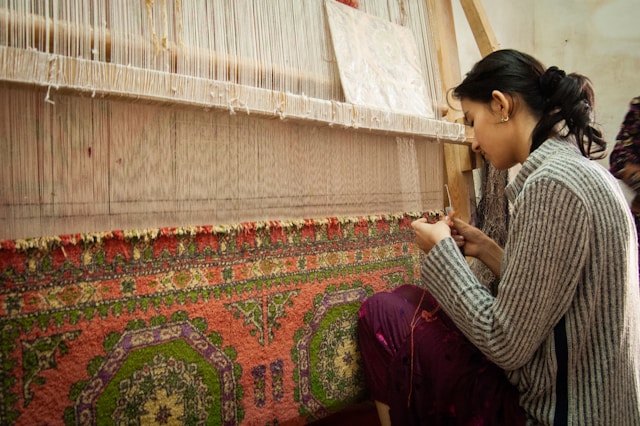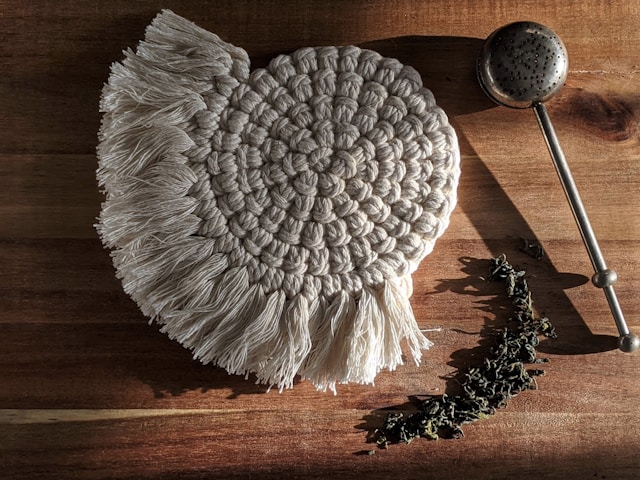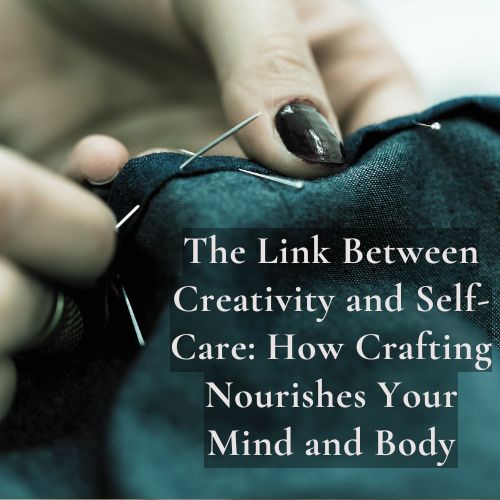There was a time when I thought of self-care as something I should do—taking long baths, doing yoga, writing in a gratitude journal. And while those things can be wonderful, they never felt quite right for me.
But crafting? That was something I could always return to.
It took me a long time to recognize that my creativity was my self-care—that sitting down with yarn, thread, or fabric wasn’t just about making something useful or beautiful, but about taking care of myself in a way that felt natural, intuitive, and deeply fulfilling.
The rhythm of stitching calmed my nervous system.
The colors and textures brought me comfort.
The process of making gave me a space where I could just be, without pressure or expectation.
If you’ve ever felt like traditional self-care routines don’t quite work for you, or if you’re looking for a way to make self-care feel more natural and accessible, this post is for you. Let’s explore why creativity is such a powerful form of self-care—and how to embrace crafting as a practice of restoration, balance, and nourishment.
🧶 Explore This More in the Craft to Heal Workshop

The Science: Why Creativity Is an Essential Form of Self-Care
Self-care isn’t just about bubble baths and face masks—it’s about regulating the nervous system, reducing stress, and giving yourself space to recharge.
Crafting supports self-care in multiple ways:
🧠 Creativity Reduces Stress and Overwhelm
Studies show that engaging in a creative activity for just 45 minutes significantly lowers cortisol levels (the stress hormone). When we focus on making, our brain shifts away from stress mode and into a more relaxed, engaged state.
🖌 Crafting Increases Feel-Good Chemicals in the Brain
Ever notice how you feel a little lighter after spending time making something? That’s because:
✔ Creativity boosts dopamine production, which helps regulate mood and motivation.
✔ The satisfaction of completing a project activates the brain’s reward system, reinforcing a sense of accomplishment and well-being.
✔ Engaging in creativity can lower symptoms of anxiety and depression, providing a natural mood lift.
🧵 Hands-On Making Helps Regulate the Nervous System
Many self-care practices focus on slowing down and reconnecting with the body—and crafting does exactly that.
✔ The repetitive motion of stitching, knitting, or crocheting has been shown to have a meditative effect, helping to reduce tension and anxiety.
✔ The tactile experience of working with fiber provides sensory grounding, which can be especially helpful for those dealing with stress or emotional overwhelm.
✔ The focused attention required for making helps bring the mind into the present, pulling us out of cycles of overthinking or worry.
Creativity is more than just a way to fill time—it’s a powerful way to care for yourself, mind and body.

How to Use Crafting as an Intentional Self-Care Practice
If you want to bring more intention into your creative time and use it as a true self-care practice, here are a few simple ways to start:
1. Make a “Self-Care Project” That’s Just for You
So often, we craft for a purpose—to gift something, to sell something, to complete a challenge. But what if you made something just because it nourished you?
🧶 Choose a project with no deadline, no pressure—just something you enjoy working on.
🧵 Pick colors, textures, and materials that feel comforting or joyful.
🪡 Let go of perfectionism—focus on how the process feels, rather than how the finished product looks.
The simple act of making something just for yourself is an act of care.
2. Pair Crafting with Other Restorative Habits
Crafting can be even more powerful when combined with other self-care practices. Try:
✔ Sipping a warm drink while you stitch—creating a sensory moment of comfort.
✔ Listening to calming music or an audiobook as you work—engaging both mind and body in relaxation.
✔ Using aromatherapy (like lavender or chamomile essential oils) while you craft to deepen the sense of ease.
✔ Crafting outside or near a window to connect with natural light and fresh air.
By layering small, nourishing habits together, you turn crafting into a complete self-care ritual.
3. Set Boundaries Around Your Creative Time
In a busy world, it’s easy to push aside creativity for more “productive” tasks. But when you treat crafting as a necessary part of your well-being, it becomes easier to prioritize.
✔ Schedule dedicated time for making, even if it’s just 10–15 minutes a day.
✔ Say no to distractions during creative time—turn off notifications, step away from obligations.
✔ Give yourself permission to craft for the sake of enjoyment, not productivity.
Crafting isn’t a luxury. It’s a way to recharge, restore, and reconnect with yourself.
4. Use Crafting as a Check-In With Yourself
Your creativity can also be a mirror for how you’re feeling.
Next time you sit down to craft, ask yourself:
🧶 What colors am I drawn to today?
🧵 Am I feeling energized and inspired, or do I need something simple and repetitive?
🪡 How does this process make me feel in my body—calm, focused, relaxed?
Noticing these small details helps you understand what you need in the moment and how creativity can support you through it.
Explore This Deeper in Craft to Heal
If you love the idea of using crafting as a self-care tool, Craft to Heal was designed for you.
In our March 18th workshop, we’ll explore:
🧶 How fiber arts can be used for emotional regulation and stress relief
🧵 Creative exercises for turning your craft into a mindfulness practice
🪡 How to build a self-care crafting ritual that works for you
This is just one part of the Craft to Heal journey, and if you’re ready to experience creativity as more than just a hobby, I’d love to have you join us.
🧶 Want to learn more? Click here to join Craft to Heal.

Creativity as a Radical Act of Self-Care
We live in a world that tells us we should always be busy, always be productive, always be achieving something.
But crafting is a reminder that slowing down is valuable, that joy is important, that taking time for yourself is not selfish—it’s essential.
So the next time you pick up your project, remember:
💛 Your craft is a way to care for yourself.
💛 Your creativity is not a luxury—it’s a necessity.
💛 Making time for your art is making time for your well-being.
Let yourself create. Not because you have to, but because you deserve to.
